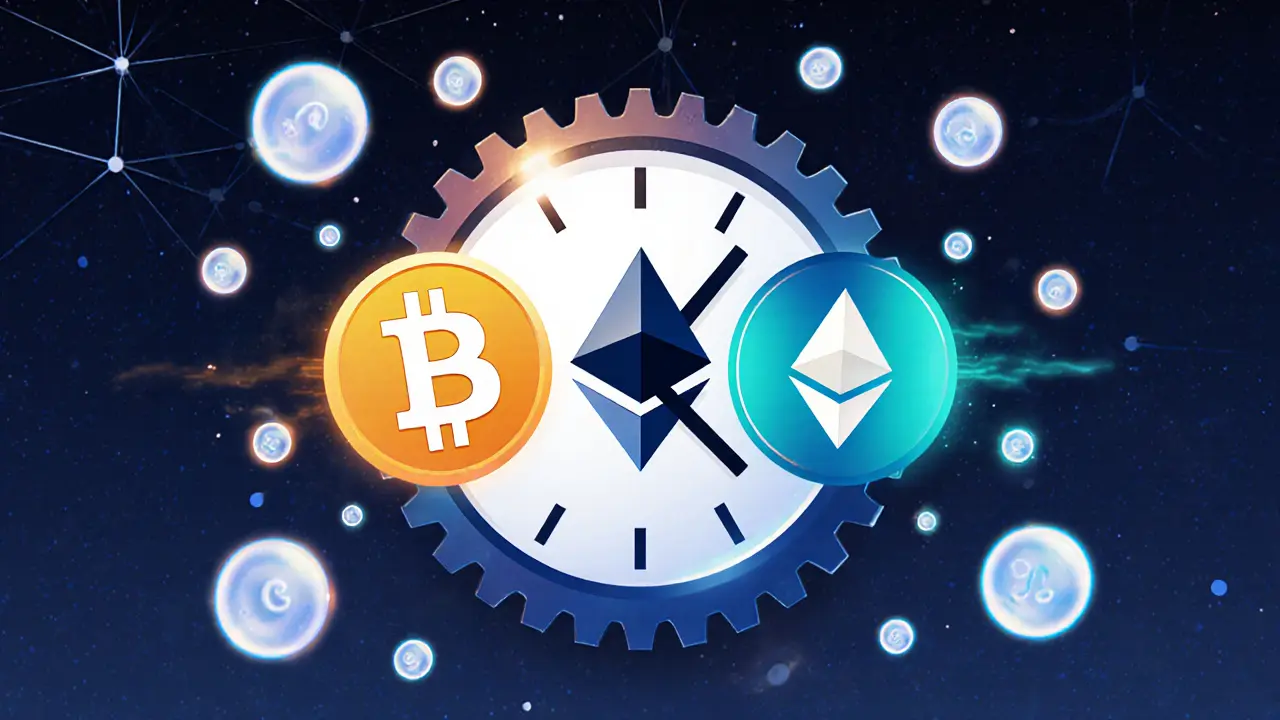Ethereum Block Time: How Fast Transactions Really Get Confirmed
When you send ETH or interact with a DeFi app, Ethereum block time, the average time it takes for a new block to be added to the Ethereum blockchain decides how long you wait. It’s not just a technical detail—it’s the heartbeat of the network. Right now, Ethereum blocks land roughly every 12 seconds. That’s faster than most people realize, but it’s not magic. Behind that number are complex trade-offs between speed, security, and decentralization.
That 12-second window isn’t fixed. It’s adjusted automatically by the network based on how busy it is. If too many transactions pile up, miners and validators push to include more per block, slightly slowing things down. If the network is quiet, blocks come faster. This isn’t like a train schedule—it’s a living system. And it’s why your transaction might confirm in 8 seconds one minute and 16 seconds the next. Compare that to Bitcoin’s 10-minute blocks, and you see why Ethereum became the go-to for DeFi, NFTs, and fast dApps. But speed isn’t free. Shorter blocks mean more orphaned blocks, which can slightly reduce efficiency. The Ethereum team chose this balance on purpose: speed for users, with enough stability to keep the chain secure.
What does this mean for you? If you’re swapping tokens on Uniswap, waiting 12 seconds is fine. If you’re trying to snipe a new token launch or race to mint an NFT, every millisecond counts. That’s why tools like gas trackers and priority fee estimators exist—they help you get into the next block, not the one after. Even though Ethereum’s block time is fast, network congestion can still cause delays. That’s why Layer 2s like Arbitrum and Optimism were built: to handle more transactions without slowing down the main chain. And while block time affects speed, it’s not the only factor. Gas fees, validator performance, and client software all play roles too.
Don’t confuse block time with finality. A block confirms in 12 seconds, but full finality—meaning no reorgs—takes about 15 minutes. That’s why exchanges and wallets often wait for 12 or more confirmations before crediting your deposit. It’s not about waiting longer for the block—it’s about being sure the chain won’t rewind. If you’re using a wallet like MetaMask or a DEX like KaiDex, you’re seeing the real-time impact of this system. The same logic applies to any Ethereum-based project, whether it’s a DeFi protocol, a gaming token like KittySpin, or a data marketplace like Itheum. They all run on this clock.
So when you hear someone say "Ethereum is slow," they’re usually talking about gas prices or front-running—not the actual block time. The network moves fast. What’s slow is the cost and competition to get your transaction included. Understanding this difference is the first step to trading smarter, investing with better timing, and avoiding panic when your transaction takes 15 seconds instead of 5. Below, you’ll find real-world examples of how Ethereum’s block time affects everything from airdrops to DeFi arbitrage, and how users in places like Nigeria and Algeria still rely on it—even when governments try to shut it down.
What Is Block Time in Blockchain? Speed, Security, and Real-World Impact
Block time determines how fast transactions confirm on a blockchain. Bitcoin takes 10 minutes per block for security; Ethereum uses 12 seconds for DeFi; Solana hits under a second but risks outages. Learn how block time affects speed, safety, and real-world use.
read more

